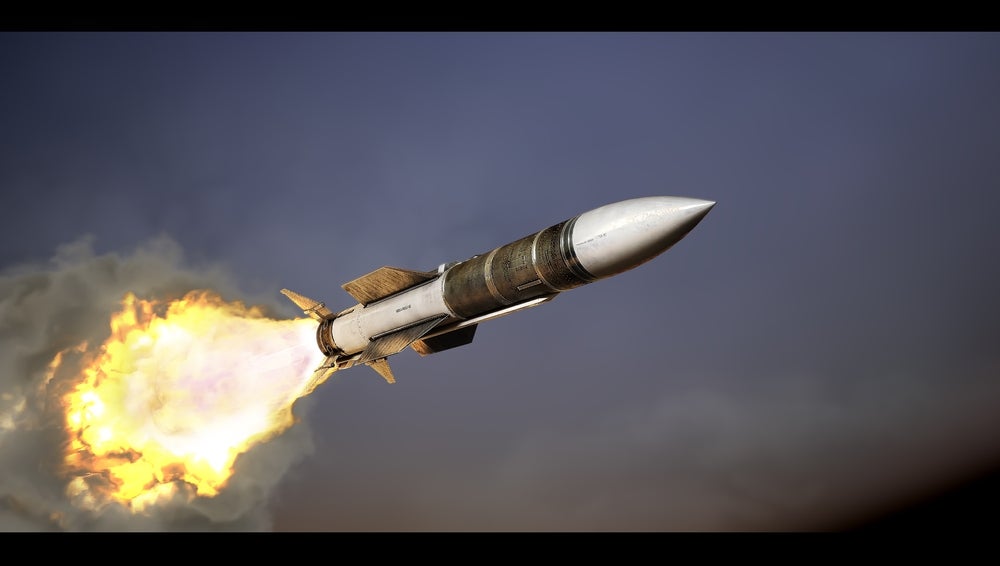The next generation of fighter aircraft is on the horizon and hypersonic (speeds above Mach 5) missiles are likely to be integrated. Hypersonic missiles have existed since the V-2 model, which was first used in 1944, however, hypersonics today usually refers to hypersonic glide vehicles, which are boosted on a rocket to a high altitude before gliding to its target, or hypersonic cruise missiles, which use air-breathing engines like scramjets, with both able to manoeuvre when above Mach 5.
A benefit is that they will be hard to detect, as heated air around them forms a plasma cloud which absorbs radar, but this is also a challenge because plasma also absorbs radio frequencies, impacting communications.
Also challenging is to shrink them to a size that can be carried by stealthy aircraft, because as the missile gets smaller it gets sharper, which increases heat, so advancements will need to be made to figure out which metals can effectively withstand the temperatures. The main players developing this technology are China and Russia, which have already introduced hypersonics into their arsenals, with the United States playing catchup.
Russia seems to be the furthest ahead, having launched the Kh47M2 ‘Kinzhal’ missiles on Ukraine from a MiG-31K aircraft – but more accurately this is an air-launched ballistic missile with little hypersonic boosting, gliding, or manoeuvring capability.
In May, Ukrainians shot down Kinzhals outside Kyiv with their Patriot air-defence systems, demonstrating homing ballistic missiles can be countered. However, Russia does have a hypersonic glide vehicle (HGV), the Avangard missile, which they claim can reach up to Mach 27 and an HCM, the Zircon missile, which has been deployed on a warship this year.
See Also:
Russia’s long-range air-to-air missile, the Vympel R-37, is capable of hypersonic speeds, originally designed for the MiG-31 but now compatible with Su-30, Su-35 and Su-57 fighter jets. They have been used against Ukraine, but pilots have been able to evade them by notching, a commonly used manoeuvre where the pilot inverts the aircraft and pulls back hard on the stick to dive.
How well do you really know your competitors?
Access the most comprehensive Company Profiles on the market, powered by GlobalData. Save hours of research. Gain competitive edge.

Thank you!
Your download email will arrive shortly
Not ready to buy yet? Download a free sample
We are confident about the unique quality of our Company Profiles. However, we want you to make the most beneficial decision for your business, so we offer a free sample that you can download by submitting the below form
By GlobalDataHowever, the Ukrainians often fly at low levels where notching is not an option, and with radar warning systems only registering the seeker roughly 20 miles away, pilots have little time to react. The R-37 is still a threat. Russia is conducting research to equip its sixth-generation fighter with more capable and perhaps within visual range air-to-air hypersonic missiles alongside making the aircraft hypersonic itself.
Over the past two decades, China has also made huge advancements in its hypersonic technologies, with research sites using wind tunnels testing up to Mach 12. Their arsenal currently contains the DF-17, DF-41 and DF-ZF models, which are all hypersonics.
While little is known about China’s sixth-generation fighter programme, it is believed that the resulting aircraft will be equipped with hypersonic missiles like other sixth-generation designs.
The United States Armed Forces are behind in the race for hypersonic dominance, with their programmes still in the development phase and the Pentagon budgeting hypersonics at $11bn in 2024, calling for ‘initial all-domain hypersonic capability’ over the next five years. To ‘enhance air-launched hypersonic prototyping and testing’, the budget enables the acquisition of 24 hypersonic missiles.
Despite this, the United States Air Force’s (USAF) acquisition executive did not intend to procure any of Lockheed Martin’s Air-Launched Rapid Response Weapon, which is HGV air-to-ground missiles, as it does not have the money in its five-year budget.
The USAF secretary has since said that they will finish testing before making the final procurement decision, gathering more test data for future programmes. The USAF believes that Raytheon’s hypersonic attack cruise missiles (HACM) offer the most potential, despite both being capable of Mach 7 (less than Russia and China’s capabilities) and ARRW having a range of 1000km and HACM having a range of 500km.
The US and Australia are collaborating on HACM through the Southern Cross Integrated Flight Research Experiment, which aims to develop an HCM capable of launching from current fighters or bombers, with the USAF planning for it to be operational by 2027.
Like Russia and China, it is likely that hypersonics will be integrated into NGAD. The US will certainly prioritise hypersonic development in the coming years primarily to match China’s growing capabilities that have major implications for conflict and security in Southeast Asia.











Related Company Profiles
Lockheed Martin Corp